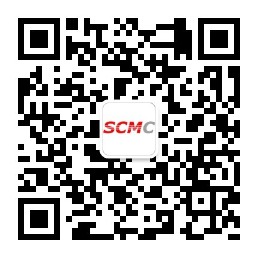Continue to yesterday's topic
Examples
There are many types of ice breakers, each suited to different types of objectives. Here we look at a few of the more popular types and how they can be used.
Introductory Ice Breakers
These are used to introduce participants to each other and to facilitate conversation amongst them.
The Little Known Fact: ask participants to share their name, department or role in the organization, length of service, and one little known fact about themselves.
This "little known fact" becomes a humanizing element that can help break down differences such as grade/status in future interaction.
True or False: ask your participants to introduce themselves and make three or four statements about themselves, one of which is false. Now get the rest of the group to vote on which fact is false.
As well as getting to know each other as individuals, this exercise helps to start interaction within the group.
Interviews: ask participants to get into twos. Each person then interviews his or her partner for a set time while paired up. When the group reconvenes, each person introduces their interviewee to the rest of the group.
Problem Solvers: ask participants to work in small groups. Create a simple problem scenario for them to work on in a short time. Once the group have analyzed the problem and prepared their feedback, ask each group in turn to present their analysis and solutions to the wider group.
Tip:
Choose a fairly simple scenario that everyone can contribute to. The idea is not to solve a real problem but to "warm up" the group for further interaction or problem solving later in the event. The group will also learn each other's styles of problem-solving and interaction.
Team-Building Ice Breakers
These are used to bring together individuals who are in the early stages of team building. This can help the people start working together more cohesively towards shared goals or plans.
The Human Web: this focuses on how people in the group inter-relate and depend on each other.
The facilitator begins with a ball of yarn. Keeping one end, pass the ball to one of the participants, and the person to introduce him- or her-self and their role in the organization. Once this person has made their introduction, ask him or her to pass the ball of yarn on to another person in the group. The person handing over the ball must describe how he/she relates (or expects to relate) to the other person. The process continues until everyone is introduced.
To emphasis the interdependencies amongst the team, the facilitator then pulls on the starting thread and everyone's hand should move.
Ball Challenge: this exercise creates a simple, timed challenge for the team to help focus on shared goals, and also encourages people to include other people.
The facilitator arranges the group in a circle and asks each person to throw the ball across the circle, first announcing his or her own name, and then announcing the name of the person to whom they are throwing the ball. (The first few times, each person throws the ball to someone whose name they already know.) When every person in the group has thrown the ball at least once, it's time to set the challenge – to pass the ball around all group members as quickly as possible. Time the process, then ask the group to beat that timing. As the challenge progresses, the team will improve their process, for example by standing closer together. And so the group will learn to work as a team.
Hope, Fears and Expectations: best done when participants already have a good understanding of their challenge as a team. Group people into twos or threes, and ask people to discuss their expectations for the event or work ahead, including their fears and their hopes. Gather the group's response by collating three to four hopes, fears and expectations from each pairing or threesome.
Topic Exploration Ice Breakers
These can be used to explore the topic at the outset, or perhaps to change pace and re-energize people during the event.
Word association: this helps people explore the breadth of the area under discussion. Generate a list of words related to the topic of your event or training. For example, in a health and safety workshop, ask participants what words or phrases come to mind relating to "hazardous materials." They might then suggest: "danger," "corrosive," "flammable," "warning," "skull and crossbones," and so on. Write all suggestions on the board, perhaps clustering by theme. You can use this opportunity to introduce essential terms and discuss the scope (what's in and what's out) of your training or event.
Burning questions: this gives each person the opportunity to ask key questions they hope to cover in the event or training. Again you can use this opportunity to discuss key terminology and scope. Be sure to keep the questions and refer back to them as the event progresses and concludes.
Brainstorm: brainstorming Add to My Personal Learning Plan can be used to break the ice or as a re-energizer during an event. If people are getting bogged down in the detail during problem solving, for example, you can change pace easily by running a quick-fire brainstorming session. If you are looking for answers to customer service problems, try brainstorming how to create problems rather than solve them. This can help people think creatively again and gives the group a boost when energy levels are flagging.
欢迎关注及分享,更多文章请识别以下二维码关注“SCMC珂涛”或“SCMsmart"
- 还没有人评论,欢迎说说您的想法!



